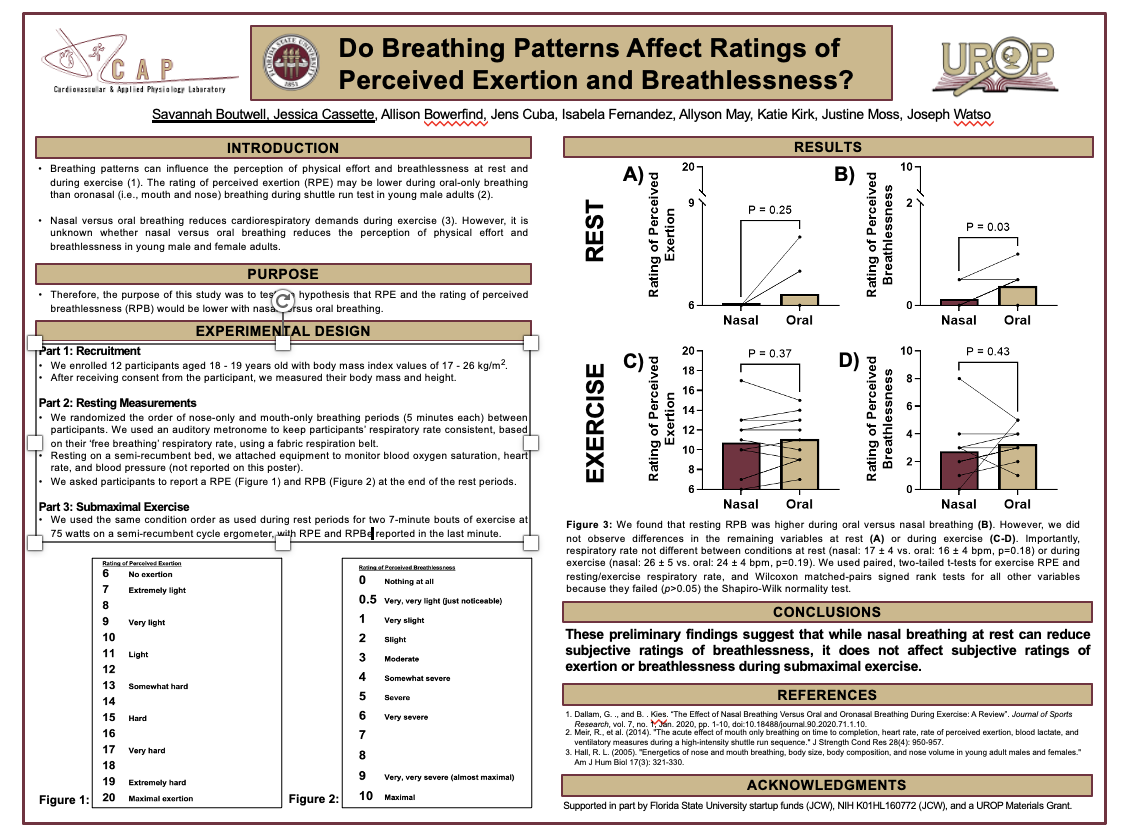Research Symposium
23rd annual Undergraduate Research Symposium, April 6, 2023
Savannah Boutwell Poster Session 3: 2:45 pm - 3:45 pm/ Poster #296

BIO
I am a Florida native from Ocala. I chose to major in STEM Entrepreneurship because it combines my two passions: business and medicine. I hope to return to my hometown where I will work as a physician and own my practice. I like to spend my free time playing pickle ball, spending time with friends and family, and being outside.
Do Breathing Patterns Affect Ratings of Perceived Exertion and Breathlessness?
Authors: Savannah Boutwell, Joseph WatsoStudent Major: STEM Entrepreneurship
Mentor: Joseph Watso
Mentor's Department: Nutrition & Integrative Physiology Mentor's College: Salisbury University and University of Delaware Co-Presenters: Jessica Cassette
Abstract
Breathing patterns influence the perception of physical effort and breathlessness. Nasal breathing can calm the nervous system, but it is unknown whether nasal versus oral breathing affects the rating of perceived exertion (RPE) or the rating of perceived breathlessness (RPB). Purpose: Therefore, we tested the hypothesis that RPE and RPB would be lower with nasal versus oral breathing at rest and during exercise. Methods: We tested 11 participants aged 18-20 years old with body mass index values of 19 - 26 kg/m2. We asked participants to report an RPE (6-20 scale; no exertion to maximal exertion) and RPB (1-10 scale; none to maximal breathlessness) for two 5-minute rest periods and two 7-minute exercise periods (75 watts on a semi-recumbent cycle). We randomized the order of nose-only and mouth-only breathing between participants. We conducted two-tailed, paired t-tests to determine whether breathing patterns affect RPE or RPB. Results: We found that at rest, breathing patterns did not affect RPE (Nose: 6.10 ± 0.10 vs. Mouth: 6.50 ± 0.22, p=0.104), but did affect RPB (Nose: 0.05 +/- 0.05 vs. Mouth: 0.35 ± 0.11, p=0.005). However, during submaximal exercise, we found that breathing patterns did not affect either RPE (Nose: 11.11 ± 1.01 vs. Mouth: 11.00 ± 0.67, p=0.88) or RPB (Nose: 2.75 ± 0.86 vs. Mouth: 3.00 ± 0.38, p=0.83). Conclusions: These preliminary findings suggest that while nasal breathing at rest can reduce subjective ratings of breathlessness, it does not affect subjective ratings of effort or breathlessness during submaximal exercise.
Keywords: Breathing Patterns, Cardiovascular, Breathlessness, Exertion


